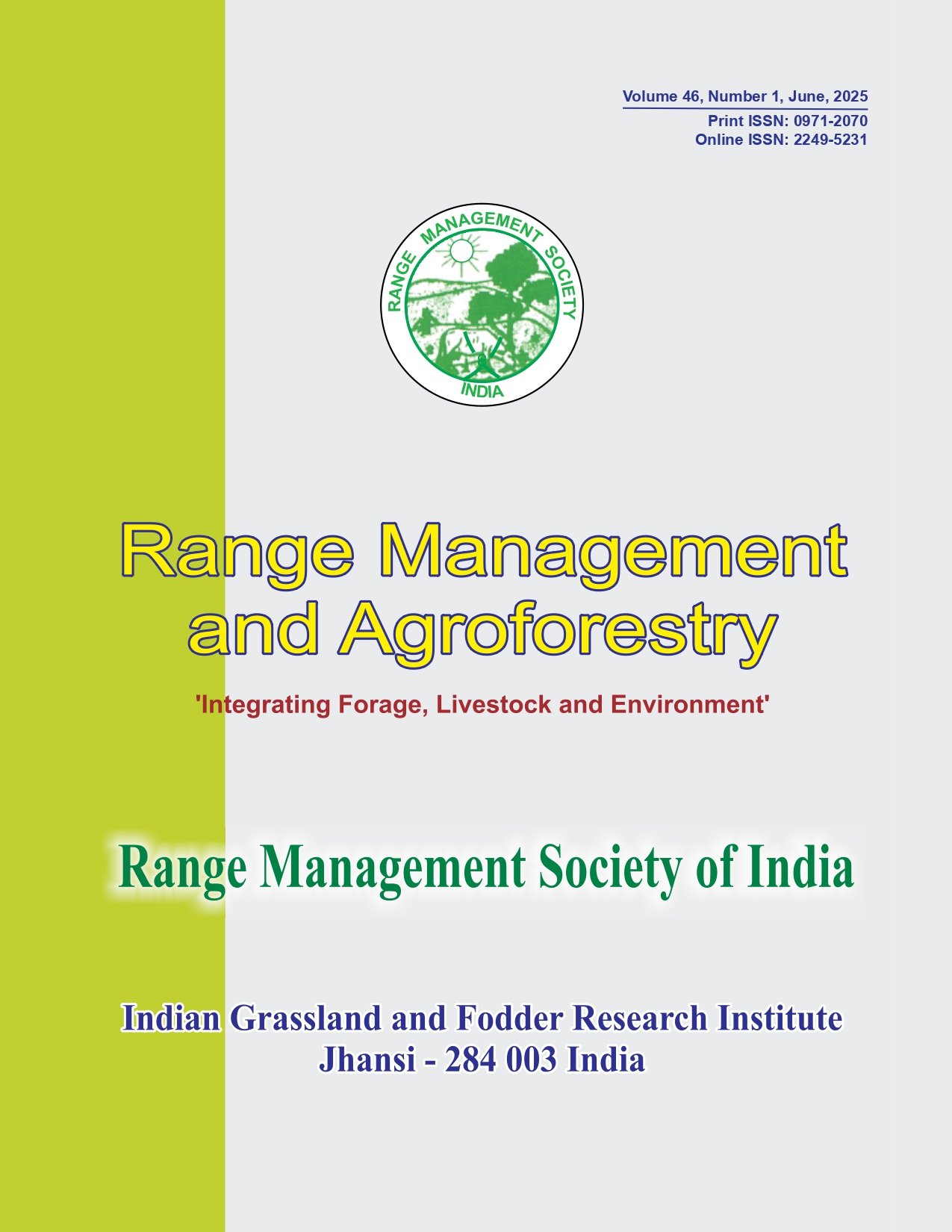Exploring comparative nutritional dynamics of conventional and hybrid varieties of Moringa oleifera in goat rumen inoculum
DOI:
https://doi.org/10.59515/rma.2025.v46.i1.11Keywords:
Drumstick, EMP, Moringa, PKM-1, MBP, TDOMRAbstract
The present study aimed to evaluate the comparative nutritional value of Desi and PKM-1 varieties of Moringa oleifera foliage using in-vitro gas production (IVGP) technique in goat feeding. Five groups were established, with substrates comprising a mix of wheat straw and concentrate (60:40 ratio) without moringa foliage serving as the control (CON). The other groups were designated as P-10 and P-20 incorporating PKM-1 moringa foliage at 10% and 20%, respectively; and D-10 and D-20 incorporating Desi moringa foliage at 10% and 20%, respectively. The study revealed that PKM-1 variety exhibited significantly higher (P<0.01) organic matter (OM) and crude protein (CP) content, while total ash (TA) and neutral detergent fiber (NDF) content were significantly lower (P<0.05) compared to Desi moringa foliage. The polyphenolic content remained comparable (P>0.05) between both varieties. Additionally, PKM-1 showed significantly higher (P<0.05) levels of phosphorus (P), copper (Cu), iron (Fe), zinc (Zn) and manganese (Mn) minerals compared to Desi moringa foliage. Furthermore, total gas volume (ml/200 mg) produced after 24 hours of incubation was significantly (P<0.01) higher in P-20 group compared to CON, D-10, D-20, and P-10 groups. Substrate degradation, measured as truly degradable organic matter in the rumen (TDOMR in mg/200mg; %), was higher (P<0.01) in P-20 group, followed by D-20 and P-10 groups, while it was lowest in D-10 and CON groups. Microbial biomass production (MBP in mg/200 mg), efficiency of microbial biomass production (% TDOMR), and partitioning factor (PF in mg TDOMR/ml gas volume) were also higher (P<0.01) in P-20 group, followed by D-20, P-10, and D-10 groups, with the lowest values observed in CON group. Hence, the incorporation of PKM-1 Moringa oleifera foliage at 20% of total dry matter significantly enhanced substrate degradation, truly degradable organic matter in the rumen, and the efficiency of microbial biomass production in goat’s rumen inoculum, as compared to Desi variety.
Downloads
Downloads
Published
How to Cite
Issue
Section
License
Copyright (c) 2025 Vasundhara Dhote, Sandeep K Chaudhary, Mahipal Choubey, Abhishek K Singh, Ajeet Singh, Ajit Kumar, Dharmesh Tewari

This work is licensed under a Creative Commons Attribution-ShareAlike 4.0 International License.







